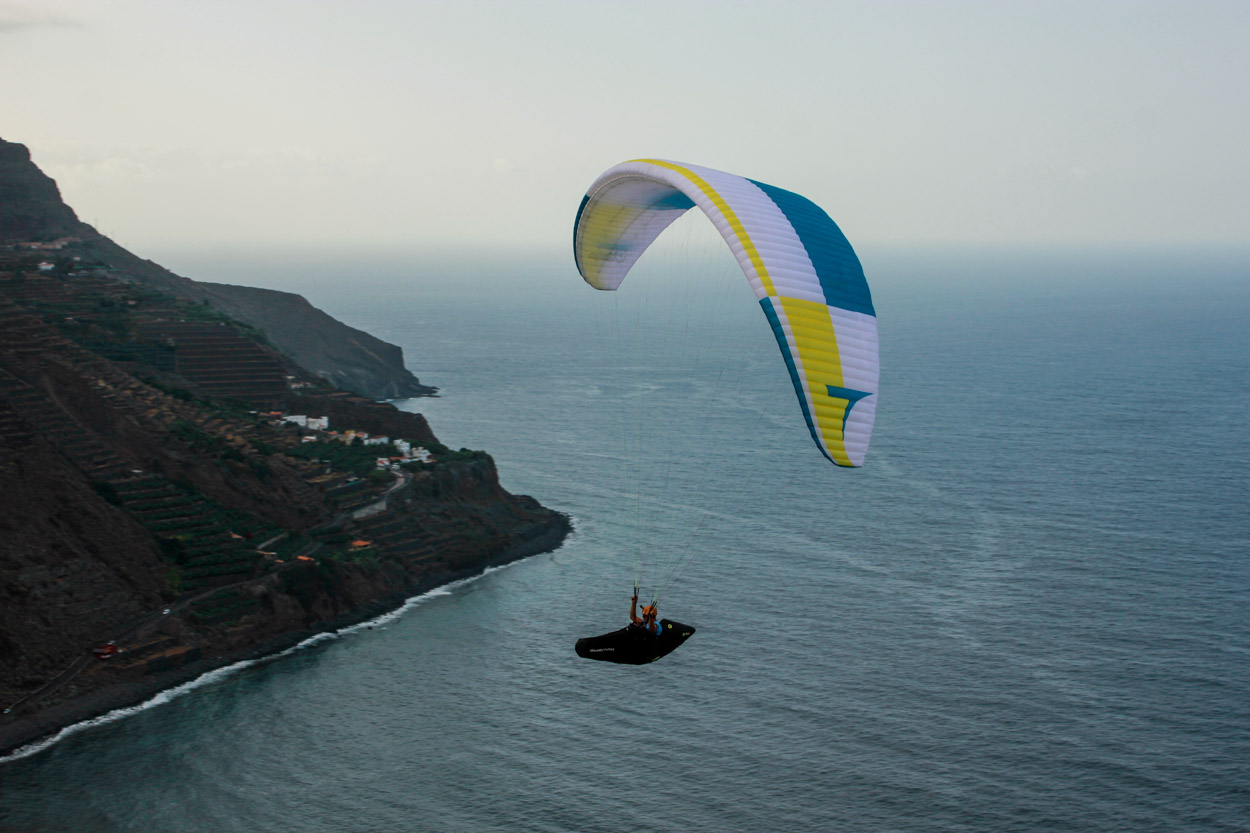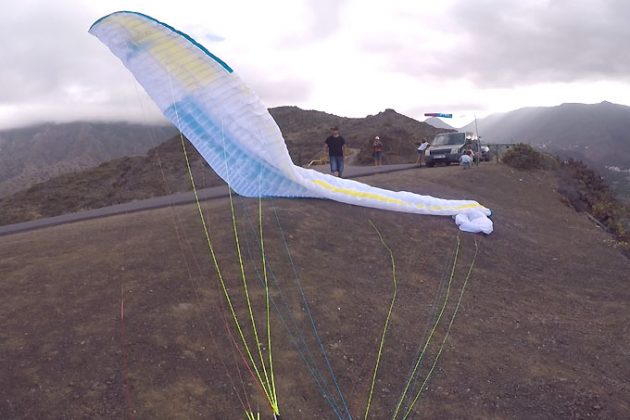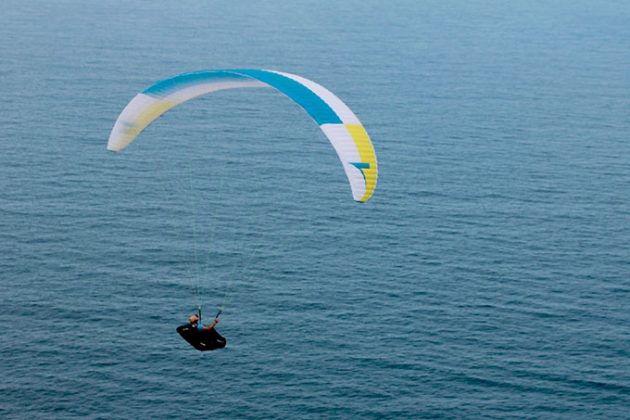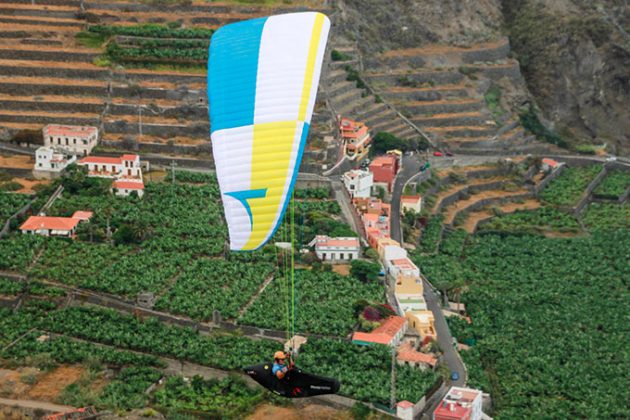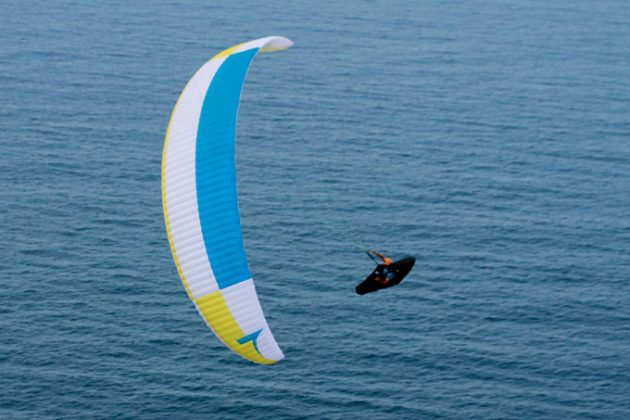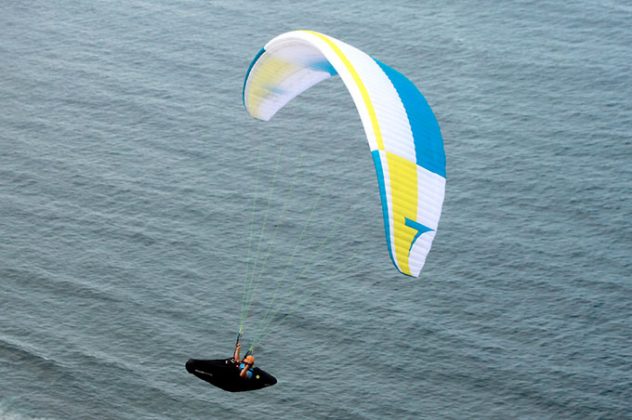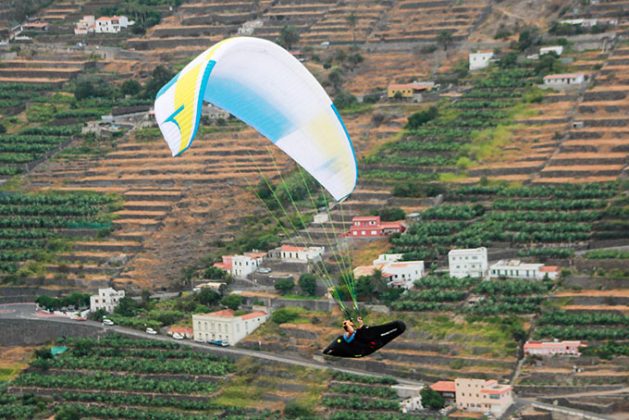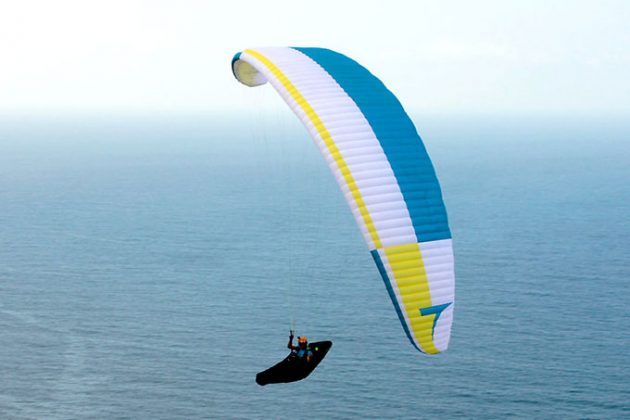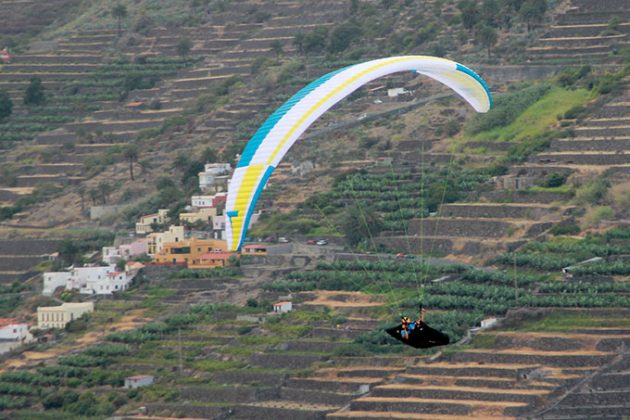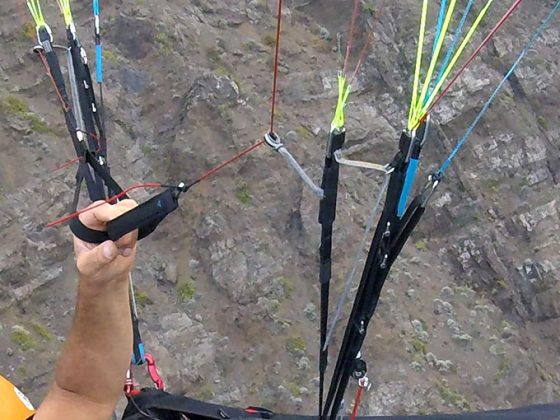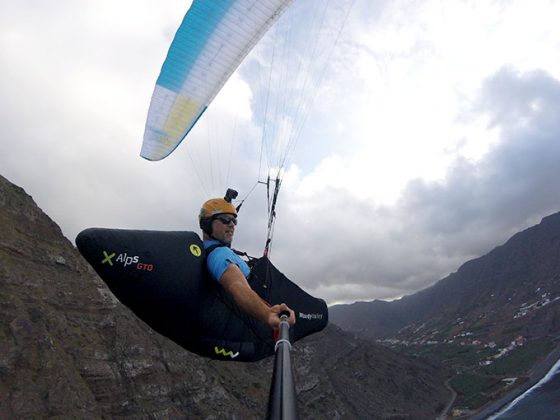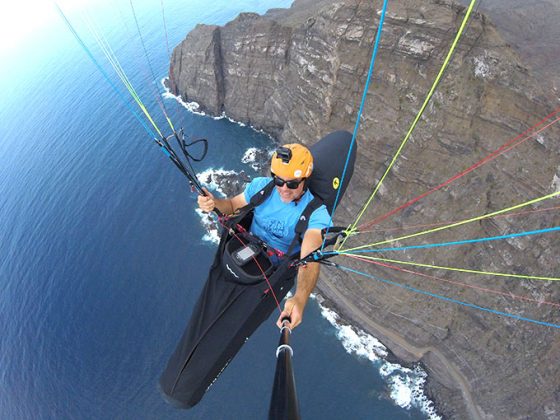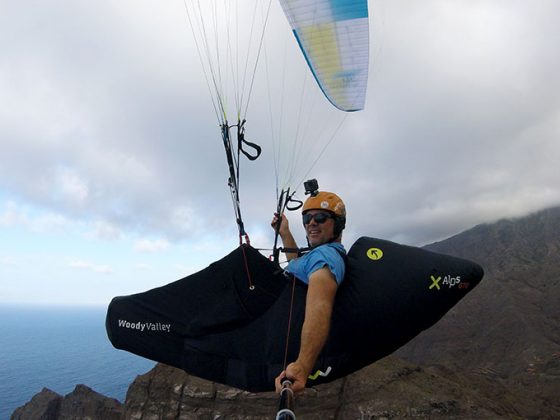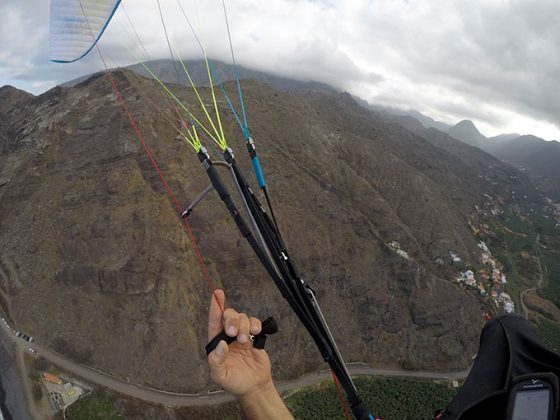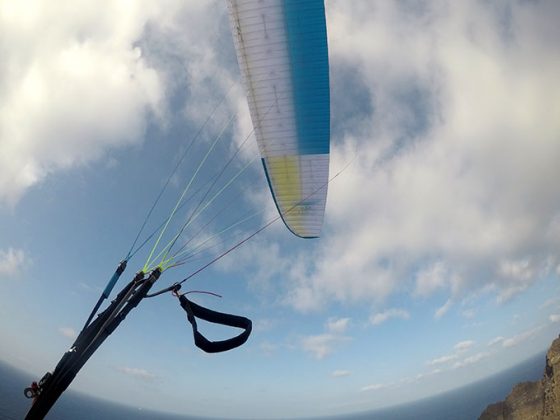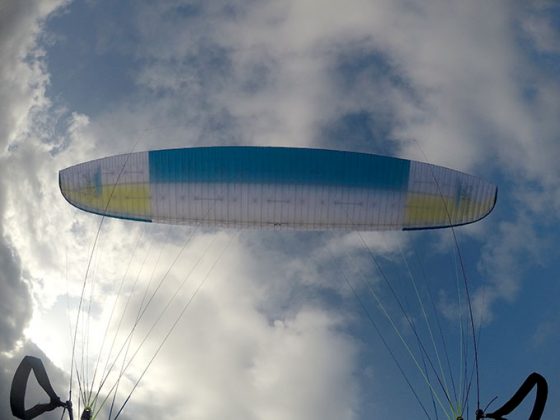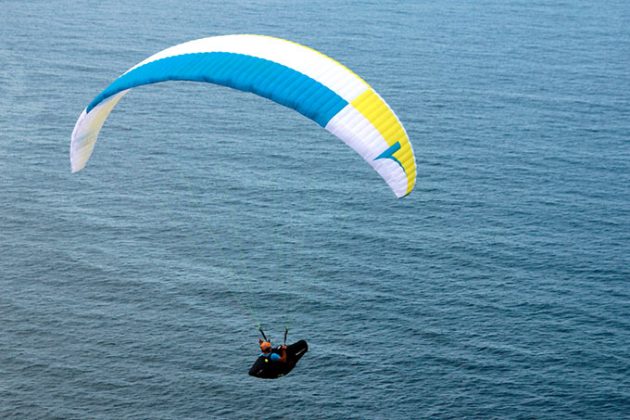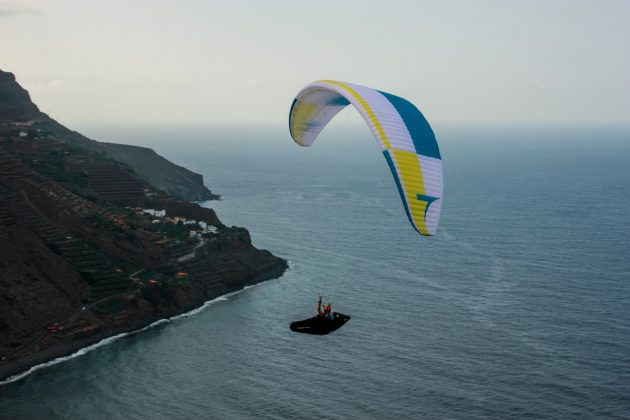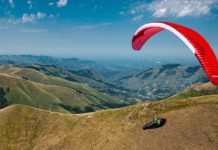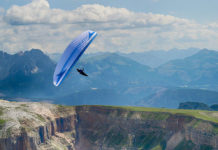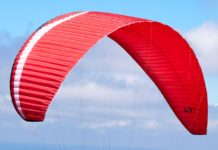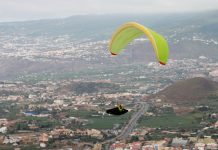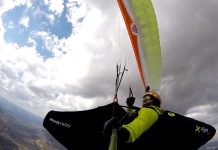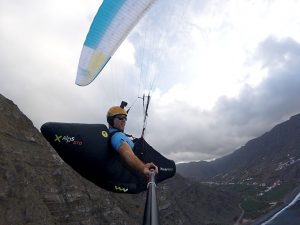
After a year in the market, the Sport class paraglider aimed at experienced pilots from the Valic bros. brand, the Queen 2, has gained recognition among the flying community -in particular within the Sport segment- thanks to its attractive and precise handling and interesting flight traits that rank it as a high performance paraglider.
The second generation of Triple Seven’s EN C model has at last arrived in size L, to cover the weight range that goes from 100 to 120 kg, and because of that, I was able to test fly it for Ojovolador.com, a truly gratifying experience for this experienced pilot.

The initial flight was performed in a playful contact mode, a pure mountain soaring flight in strong wind to take off and fly. During this flight, I was able to get to know the core of the wing’s dynamic and sportive command, explore several ways to turn and the different speed gains using the speed system.
The following flights were done in Taucho (South of Tenerife), the perfect scenario for thermal flying with all sorts of thermals and supports. There, I was able to perform a classic training circuit using the speed bar and handling it with the rear risers in several transitions.
Triple Seven and Queen 2
Founded in Slovenia in 2011 by the brothers Aljaz and Urban Valic – at the time both acclaimed, record holding, top competition pilots of the paragliding world- 777 (Triple Seven) is already a renowned paragliding brand of the industry that offers a wide array of wings, from initiation to performance, to mini light wings. Their philosophy is to produce technologically innovative gliders with the commitment of delivering “an optimum combination between safety and performance”. The Queen 2 is a completely new design that incorporates more cells than its predecessor and a new inner construction aimed at providing the wing with maximum strength in flight and improved traits to climb thermals, in Aljaz own words. The paraglider comes with Back Position intakes (BPI) in the nose and a load distribution supported by fine Nylon rods sewn into each cell wall in wave pattern, along with a refined trailing edge with mini ribs.
Ground handling and Take-off
The Hermigua take off, in La Gomera Island (Canary Islands, Spain), is located on a very steep slope at the exact edge of its top, and offers little if no margin for mistakes, or sudden bursts of wind. (I later realized there is a second and lower take-off on the slope, more appropriate for days of strong wind).
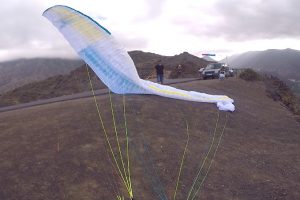
The day of our test flight the wind was pretty intense, around 30 – 35 km/h. In other words, kind of “in the limit”, like we say, so I opted for the cobra launch. Though I was certain taking-off wouldn’t be a problem, a chill went down my spine as a reminder that the situation was, definitely, a bit on the limit.
I waited a moment for a good gust of wind to start pulling from the riser and lift the tip of the wing. Everything happened in a single breath of air, yet in a controlled and gradual manner. The wing took the air in at the edge of the window and as soon as it reached the vertical, I felt an intense lift and was airborne.
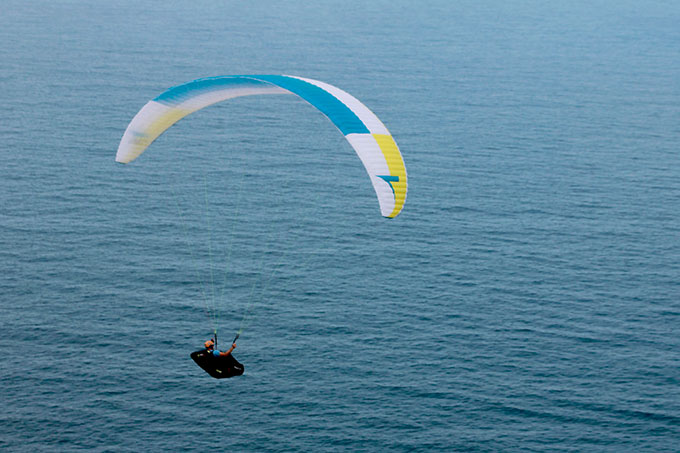
In the initial seconds I received a good gust of information from the wing. A couple of brief and dry movements in the yawing axis were required to adjust myself to the brake length. During the first seconds flying the Queen 2, I was surprised by the advanced nature of the wing, both by the 6.3 points of its aspect ratio and performance as well as for the super short and direct command, almost at level with that of the most advanced wings
Turning
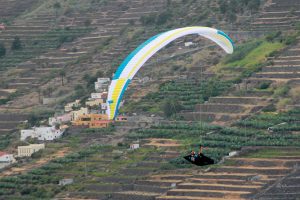
As soon as I took off, and after a mental moment of “initial adjustment”, I started trying the turns of the Queen 2. My approach to handling the Queen 2 was progressive, from less to more. The sensation was superb, Triple Seven’s EN C paraglider offers refined, elegant and proportionate movements with a reactive short brake. Weigh transfer does its work fully and effectively providing the accent to making perfect and efficient turns.
Of course, slope flying in laminar wind isn’t the norm.
We needed to try it in conditions of strong thermals, the wing’s ideal territory. So I flew the Queen 2 at Taucho, the classic launch site in the south of Tenerife, where I was able to turn narrow and turbulent thermals.
The Queen 2 with its long profiled aspect ratio offers an important amount of information/ feedback. It is easy to understand the lifts with it and it demands you to fly it with speed. You need to let it fly to then take advantage of its energy and climbs, that’s how you are able to squeeze the best “juice” out of each thermal.
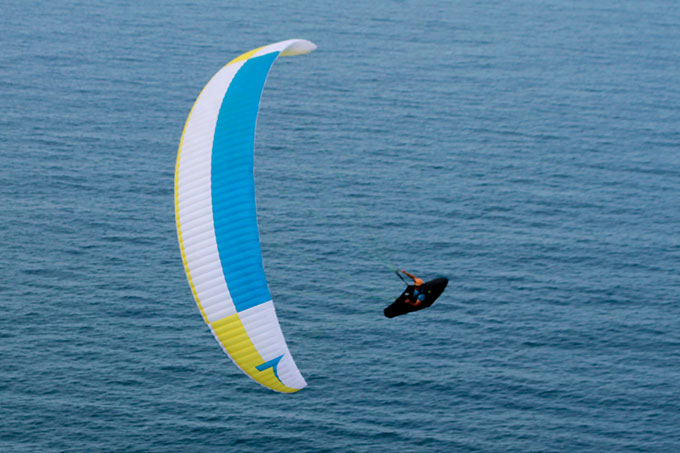
Throughout this game and against appearances, the wing tips hold the pressure and are quite resistant. Any experienced pilot with a good feel flying gliders of a shorter aspect ratio will have no problems with the Queen 2. This elongated wing surprises us offering great cohesion and a solid work with two semi-planes working in block.
Performance
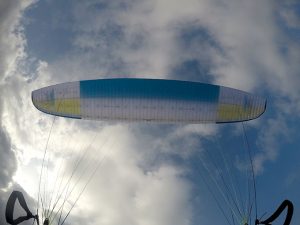
The Queen 2 has what it takes to reign in the Sport class. Pure glide is overwhelming and places it at the top of its category, and at the same level of many 3-line EN D wings. The Queen 2 counts with an efficient speed bar and the possibility of handling it with the back risers to optimize the glides in turbulent air, in the style of 2-line paragliders, achieving efficient and performing glide lines.
The top speed of the Queen 2 size L is around 55 km/h. The bar, soft at first, gets harder in the end. In the accelerated configuration mode, this wing has a solid shape and a notable resistance to turbulence.
The best glide is achieved using the first third of the bar. At full speed, though the performance degrades a bit, it is very efficient at the time of fighting against the wind.

Safety
The Queen 2 has been certified as an EN C, but for what I felt in terms of handling and performance, I would place it closer to 3-line EN D paragliders. It is clearly a model aimed at experienced pilots. It is noble, solid and resistant to collapses but the aspect ratio, the speed and the handling response, demand the pilot to be alert.
Conclusion
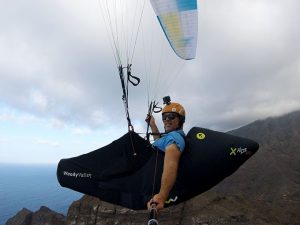
Triple Seven’s Queen 2 is a high-end EN C, a “pure breed” paraglider that gives us the direct and precise sensations of more advanced performance wings.
The handling of the Queen 2 is more demanding and refined than that of competing models of the Sport class. Which means, in my opinion, that it is also harder to make it perform in full. That’s why, it is probably not the right wing for a Club (EN B) class pilot seeking progress. It is more a paraglider to transition to 2-line EN D models.
Overview and materials
The Queen 2, now in four sizes: S, MS, ML, L, is an advanced 3-line EN C paraglider, with 73 cells and 6.3 points of aspect ratio, 4.6 projected.
Quite a light glider, it ranges from 4.9 to 5.9 kg in the largest size, the one we tested.
All the outer sail is made in Dominico 20D MF fabric, except for the leading edge, strengthened with Dominico 30D MF; while the interior: ribs, diagonals and mini-ribs are made in Porcher Skytex 40 Hard 9017 E29.
The lines are made in PPSL Liros and Edelrid A-8000-U.
The narrow 13mm risers are made in strengthened Nylon with Kevlar and the pulleys used for the speed bar are Harken P18mn.
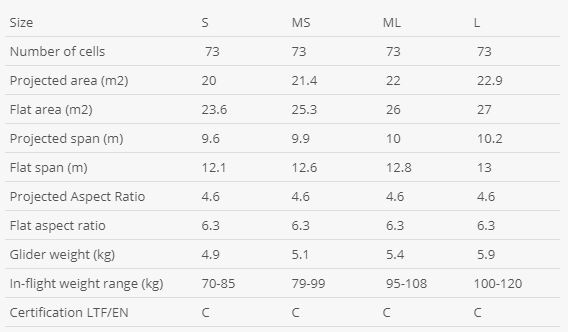 +Info: https://777gliders.com
+Info: https://777gliders.com


